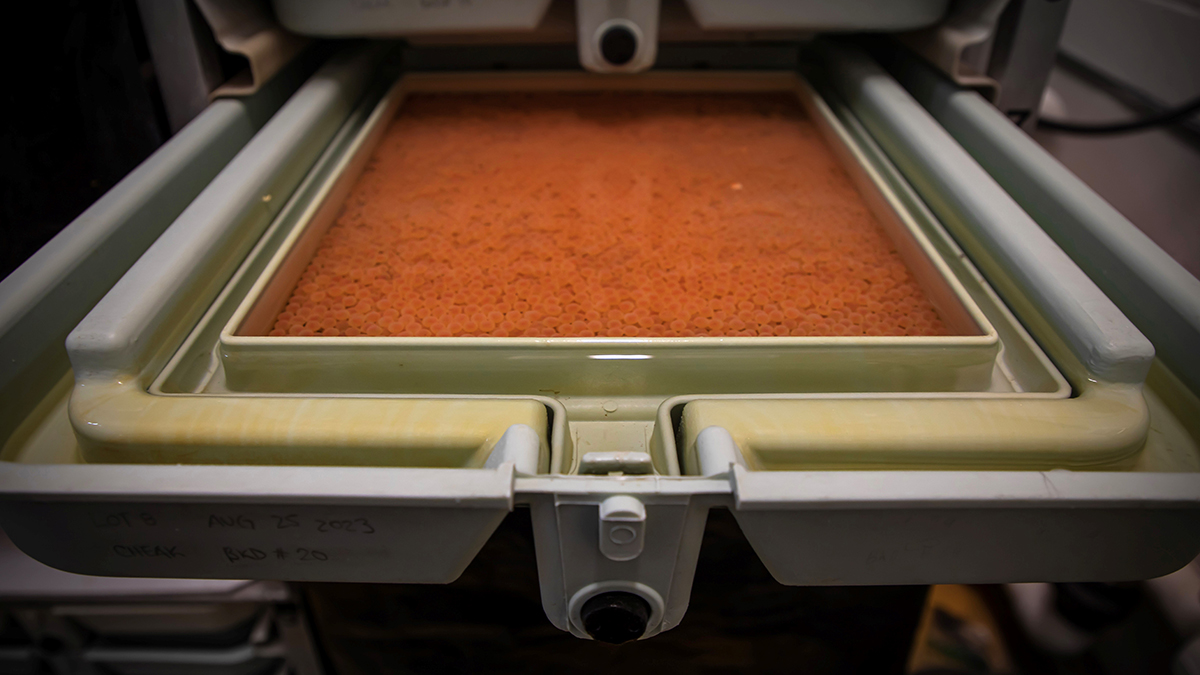How hatcheries are playing a crucial role in conserving Pacific salmon populations: Portage Creek Chinook

On the shallow shores of Anderson Lake, a member of the Xwísten community with DFO Salmon Enhancement Program staff holding a male Chinook that has returned to spawn in Portage Creek, B.C.
In the rugged landscapes of British Columbia, Portage Creek winds through the territory of the St’at’imc Nation in the Squamish-Lillooet area, carrying with it both life and tradition. Here, Chinook salmon have returned for generations, bringing vital nutrients to the ecosystem and playing an irreplaceable role in the cultural fabric of Indigenous communities. But now, these Chinook are at risk of disappearing. For the past 20 years, their numbers have steadily declined, placing this genetically unique population on the brink of extinction.
Classified as a vulnerable, single-site Conservation Unit under Canada’s Wild Salmon Policy, the Portage Creek Chinook faces a stark future. With current adult Chinook numbers falling short of sustaining the population, biologists warn that without intervention, these salmon could vanish within the next decade. Losing them would mean not only an ecological loss but also a cultural one for the St’at’imc Nation, whose people have long been stewards of this land and its waterways.
To address this crisis, our Salmon Enhancement Program staff at Tenderfoot Creek Hatchery have joined forces with the Xwísten community from St’at’imc Nation, Tsal'álh leadership, St’at’imc Government Services, Instream Fisheries Research, and Seton Portage community members. Each October, members from Tsal'álh, Xwísten and the Seton Portage community come together with Tenderfoot Hatchery staff to collect eggs from wild Chinook returning to Portage Creek. These eggs are carefully incubated and nurtured at Tenderfoot Hatchery under controlled conditions until they hatch into tiny juvenile Chinook salmon. Within 2 years, these young fish are released back into Portage Creek to aid in rebuilding the population. Since 2019, this partnership has released on average 30,000 Chinook smolts into the creek each year. In 2024, the hatchery is rearing 43,000 Chinook smolts from the 2023 brood collection that will be released in April 2025.
Our efforts have already produced positive results. In October 2023, the first enhanced adult Chinook salmon from 2019 returned to Portage Creek. 50 hatchery-born Chinook returned and contributed to the spawning population, with similar results observed in 2024. These amounts are significant given that average Chinook returns have been 122 adults since 1979, reaching lows of only 12 adult Chinook returning in 2016 and 2021. In terms of the impact of the enhanced fish to overall adult returns to this system in 2023 and 2024, full data is not yet available, but staff observed that approximately 30-40% of the broodstock they captured in 2023 and 2024 were of hatchery origin, providing us with a signal about the positive contribution of the Portage Chinook enhancement program.
Each returning fish also strengthens the ecosystem, providing food for bears, eagles, and other wildlife, while the decomposing bodies of post-spawn salmon enrich the environment with nutrients essential for plants and microorganisms. These returning fish are more than just numbers; they are a lifeline in the overall recovery and sustainability of the Portage Chinook population.
The journey to rebuild the Portage Creek Chinook population is long, and the challenges are many. Yet, alongside work carried out by partners, the work at Tenderfoot Hatchery is another example of where hatcheries play a crucial role in salmon conservation and management. Along with other projects we have initiated under PSSI, this work is aiming to restore vulnerable populations of Pacific salmon and their habitat.
Related links
- Date modified:

